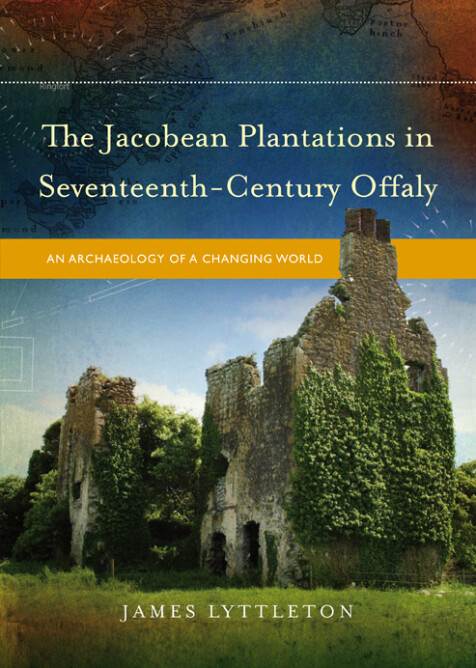The Jacobean plantations in seventeenth-century Offaly
An archaeology of a changing world
James Lyttleton
‘There is no volume that covers any of the other Jacobean plantations elsewhere in Ireland in such depth. In summary, the volume is a wonderful contribution to scholarship and a riveting read', Rolf Loeber, Studia Hibernica (2013).
‘An exceptional and scholarly exemplar study that all with an interest in landscape archaeology should consider’, Matt Ritchie, Medieval Archaeology (2014).
‘This book provides a thorough investigation of both native and settler’s impact on the buildings and shaped landscapes of Co Offaly during the 1600s … it provides an important introduction to the architecture and landscapes of a culturally complex county during a particularly turbulent part of Ireland’s history', Rachel Moss, Irish Arts Review (Spring 2014).
‘The Munster and Ulster Plantations dominate archaeologists’ thinking about this transformative period of Irish history, leaving the other Jacobean and the Caroline Plantations relatively little studied. Dr James Lyttleton, one of the stars in the firmament of post-medieval archaeologists in Ireland, now leads the charge into these lesser-known worlds with this fine book on the Jacobean project in those parts of Offaly that were outside the Tudor Plantation. This is a valuable study, and will be read widely and eagerly … I think that the chapter on the archaeology of religion is by some distance the most important single part of this book … this is a very good book and it meets a long-felt need. We are indebted to James Lyttleton for writing it and to Four Courts Press for publishing it in an attractive edition, and as those debts can only be repaid by purchasing, I happily recommend all archaeologists interested in the 1500–1700 period to do just that’, Tadhg O'Keeffe, Journal of Irish Archaeology (2013).
‘The early modern English conquest of Ireland wrought profound transformation in Ireland. Plantation served as one of the strategies central to English control, and accordingly larger plantation schemes in Munster and Ulster have received considerable attention. James Lyttleton extends this important field regionally and chronologically with this study of the Jacobean plantations in south and west Offaly … it is Lyttleton’s sensitivity to the lived experience of each housing form [of the period] – architecture’s conveyance of its inhabitants’ mores, behaviors, and relationships – that significantly deepens his assessment of architecture as so richly reflective of change’, Valerine McGowan-Doyle, Renaissance Quarterly (2016).

